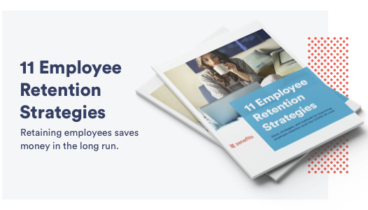Discover how your organization can keep its diversity, equity, and inclusion efforts thriving in the work from home era.

Here's what you need to know:
-
Survey results show that most people favor working from home, and workers from underrepresented groups have an even greater preference for it
-
You can transfer any DEI policies and plans you created for your onsite workforce to your offsite workers
-
It’s recommended that you communicate your organizational standards to all employees on proper conduct in the virtual world and then hold them to those standards
If there’s anything certain about today’s workplace transformation, it’s the remote-work explosion. Employers who thought working from home (WFH) would be a temporary response to the spread of COVID-19 know now that remote work is fast becoming the norm.
In fact, a McKinsey & Company survey found that 4 out of 5 respondents who worked remotely preferred to keep it that way.
But remote work isn’t without obstacles, its own and those it creates for an employer’s diversity, equity, and inclusion (DEI) plans. McKinsey’s research shows that while WFH offers flexibility, work-life balance, and a personalized employee experience that empower workers, it also ramps up the “in-group” and “out-group” dynamics that DEI tries to remedy.
As a small business (SMB), your organization can keep its DEI efforts on track in the remote-work era, whether fully offsite or hybrid. The first step is understanding what WFH means to underrepresented groups of workers, DEI’s challenges before WFH, and how remote work can derail DEI plans.
What do diverse workers think of WFH?
If most people favor WFH arrangements, many workers from underrepresented groups have an even greater preference for it, according to McKinsey. Survey results show that:
- Workers with disabilities were 11% more likely than those without disabilities to favor WFH.
- While 70% of men and women workers preferred hybrid work arrangements, nonbinary employees were 14% more likely to favor them.
- LGBTQ+ workers were 13% more likely to favor WFH than their heterosexual coworkers.
When survey respondents were asked how likely they were to leave a job because their employer didn’t offer WFH, here are the results:
- Black workers were 14% more likely to leave than their White colleagues.
- LGBTQ+ workers were 24% more likely to leave than their heterosexual counterparts.
- Workers with disabilities were 14% more likely to leave than workers without disabilities.
- Women were 10% more likely to leave than men.
- Workers who identify as nonbinary were 18% more likely to quit than women or men.
The study concluded that offering WFH options for workers and making sure DEI measures are carried out is a delicate balance for employers.
What’s your biggest 2022 HR challenge that you’d like to resolve
Answer to see the results
How well was DEI doing before WFH?
Building cross-cultural, cohesive teams takes focus and commitment. This is a challenge that Shalaura Soliai, MBA, vice president of DEI at Discovery Behavioral Health, said predates WFH.
“Having to provide/prove a ‘case for diversity’ to garner corporate “buy-in’ was a major DEI challenge before the massive work-from-home era,” Soliai told Workest in an email. “The murder of George Floyd was the unfortunate catalyst that brought about the immediate need and adoption of workplace DEI initiatives to support a workforce that was in pain. At the same time, national shelter-in-place ordinances drove the non-essential worker majority into remote work by the masses due to the novel pandemic.”
Money shortfalls can disrupt major initiatives for SBAs. And according to Ashley Brundage, president and founder of Empowering Differences, DEI is no exception.
“Budget is the largest challenge faced in DEI because [DEI] is seen as an expense to the organization,” Brundage told Workest by email. “This is why it is so important to link DEI programming to [ways] it can drive revenue for an organization.”
Other hurdles for DEI, said Brundage, are retaining top talent and tracking the progress of DI programming. Another hurdle is expanding programs that connect all employees despite their differences.
How different is DEI under WFH?
What should employers do differently with more employees working remotely than they did when most work was performed onsite?
Stephen Paskoff, CEO of Employment Learning Innovations (ELI), a workplace training provider, thinks that employers may not be transferring the same DEI ideals they cultivated for an onsite workforce to the virtual workspace.
“Many employers are still facing the challenge of getting leaders and teams to appreciate that the same standards of conduct set for live teams in offices, plants and in the field apply to the virtual world,” Paskoff told Workest by email.
While he agrees that communicating organizational values of inclusion, respect, and civility is challenging, he said that employers have had DEI policies in place before the pandemic but seem to have forgotten about them once employees started working remotely.
Brundage thinks that creating a DEI strategy is more challenging now than in the WFH era, where organizations don’t control the entire workplace.
“Before the work from home boom, I built 50 different DEI market strategies for PNC Bank’s regional headquarters’ markets but now [it’s] a much different situation,” said Brundage, comparing the things that onsite employees enjoy, like snacks and water cooler talk, that offsite employees don’t experience. “All [these] things contributed to the common-ground items that typically connect people in an office.”
How can DEI plans stay on track?
Here are practical steps for making sure remote work doesn’t derail your DEI efforts:
- Tap into employees’ needs, preferences, and expectations.
- Encourage managers to get ongoing feedback from workers on what’s going right or wrong in their work experience.
- Find the mutually beneficial connection between WFH and inclusiveness to make your organization an ideal place to work.
- Sponsor teambuilding events that make every worker feel included, respected, and valued.
- Provide conflict-management coaching.
- Create a culture that encourages employees to:
– Get to know each other.
– Learn how work gets done.
– Create a buddy system.
– Seek help for and advice from each other.
– Set boundaries for a healthy work and personal life.
– Share ideas and experiences.
More steps to take to keep DEI efforts on track with remote work
Brundage said that she doesn’t recommend forcing people to be part of a DEI plan. However, she does believe in tying DEI metrics to people’s pay for across-the-board accountability.
She recommends adopting an accountability process called APP of empowerment. APP stands for authority, power, and people.
Soliai recommends:
- Regularly scheduling Employee Resource Group (ERG) meetings.
- Using communication channels, like Teams.
- Proactively addressing issues based on DEI survey results.
- Offering more employee benefits that reflect workforce diversity.
These steps have made DEI initiatives both accountable and successful, said Soliai.
Handling bias and discrimination in remote work spaces
Speaking of accountability, should employers handle bias and discrimination in remote work spaces any differently than they would onsite?
Paskoff said that the virtual work setting might not be where people expect harassment to occur. However, it can surface unless employers communicate and reinforce their workplace values. Employers must make them part of everyone’s daily expectations.
He recommends handling bias and discrimination in the virtual workspace as you would onsite. This includes encouraging employees to come forth with complaints and any information, in-person or virtual, that can back up their claim.
Paskoff said that the virtual work setting might not be where people expect harassment to occur but that it can surface unless employers communicate and reinforce their workplace values and make them part of everyone’s daily expectations.
Brundage’s recommendations for employees come from personal experiences. “As a proud and out woman of transgender experience, I have faced both bias and discrimination. I leveraged those situations to give me more personal motivation, to prove people wrong, and show them I could drive empowerment for all people.”
She recommends that employees use challenges as motivation and arm themselves with data showcasing their achievements, which they can share whenever they face bias or discrimination. She added that she often was ready with statistics on how she drove revenue for organizations.
Can DEI ever benefit remote work?
Yes, said Scott Lieberman, founder of Touchdown Money, a publisher that teaches entrepreneurs how to make money online.
“Remote work presents an awesome opportunity to hire people of diverse backgrounds without even knowing it,” Lieberman, who oversees an all-remote workforce, told Workest by email. ‘I’ve hired people without ever seeing their face or examining their educational background. I only care about their skills and their passion to learn and grow.”
Besides believing that DEI has hiring advantages in a virtual workspace, Lieberman also thinks employers with remote workers have a better chance of meeting DEI goals.
“Is your office set up to properly allow for workers’ needs, such as breastfeeding, proper wheelchair access, praying multiple times per day, not working on a sabbath day, proper communication for the hearing and sight impaired, and [sensitivity] to bright lights, and so on?” he asked.
If so, he said, “Remote work and flexible scheduling enable you to more easily invite talented folks with physical disabilities, with different religious backgrounds, with different health needs, with both rural or urban upbringings, and so on to join your team.”
The takeaway: You can transfer DEI policies to offsite workers
You can transfer any DEI policies and plans you created for your onsite workforce to your offsite workers and make them stick.
Paskoff recommends that you communicate your organizational standards to all employees on behaving properly in the virtual world. Then, hold them to those standards.







